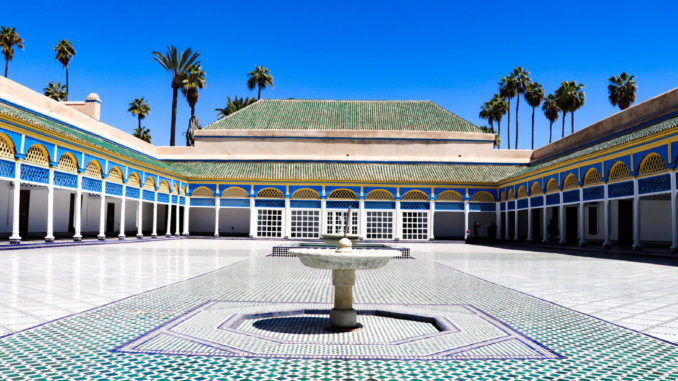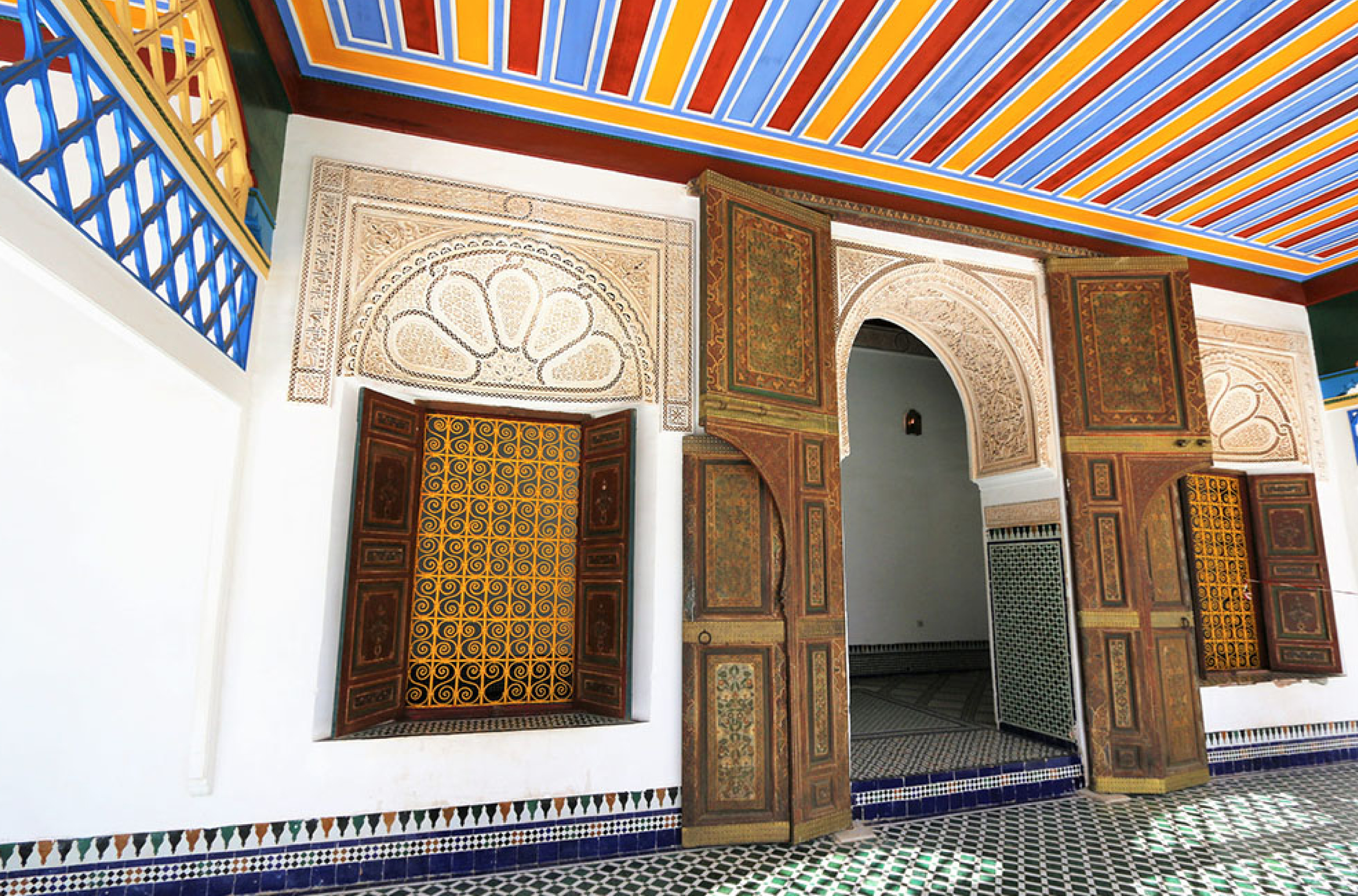
A building that bears witness to the splendour of a glorious past and the unchanging qualities of Moroccan craftsmen
The sumptuous Bahia Palace is the result of the whims of a father and son, both grand viziers of the Sultans of Morocco, who wanted to show their authority while enjoying the privileges of their position.
Despite its timeless character, straight out of the splendours of the East or Andalusia, the palace is recent since its construction began in 1866 under the reign of Sultan Hassan I (1836-1894). Sandwiched between Jemaa el Fna Square, the Koutoubia and the Royal Palace, the building extends over nearly 8,000 m2 and houses a huge riad, which was then the most prestigious in the whole city.
From father to son, the lineage of an ambition
Its first owner was called Si Moussa and his son Ahmed ben Moussa succeeded him in 1894 becoming the regent of the young sultan Abdelaziz ben Hassan who took up this position when he was only 16. He reigned over Morocco until 1908. This regency position gave the man known as "Ba Hamed" unlimited power, which he used to complete the construction of the palace bequeathed by his father, occupying it to lead his dream life and thus offering the ochre city an architectural jewel that would honour the greatest artisanal talents of Morocco.
Fourteen years will have been necessary to finalise the building which includes one hundred and fifty rooms, countless courtyards and interior gardens, a veritable labyrinth of corridors, a Koranic school, hammams, a harem, stables… all decorated by the best craftsmen of the moment with painted and illuminated cedar wood ceilings made in the Middle Atlas, marble from Italy and Meknes, and earthenware from Tetouan.

From the whims of power to those of the heart
Ba Ahmed lives there with his four official wives. He will reserve the large riad for his personal harem composed of 24 concubines, as well as their numerous children; where he will take pleasure in coming to rest, close to an almost fairy-tale garden dotted with orange trees, high cypresses, banana trees, Japanese lilacs, geraniums… Among all the luxury that surrounds him, he has a preference, a favourite mistress, the most beautiful of all. He chose to call his palace the Bāhiya, which means the brilliant one.
When he died in 1900, the palace was looted and abandoned. It was not until the signing of the French Protectorate over Morocco that General Lyautey, taken by the aristocratic charm of the building, made it his personal residence from 1912..
From 1930 onwards, the Bahia Palace became an art museum and presents to the public, in addition to its magnificent architecture and decorations, collections of handicrafts from southern Morocco, carpets, jewellery and costumes, pottery, ancient weapons, and worked leathers.
Today, the palace can be visited for a modest fee. A must-see for a good understanding of the Marrakech of the past.

Leave a Reply